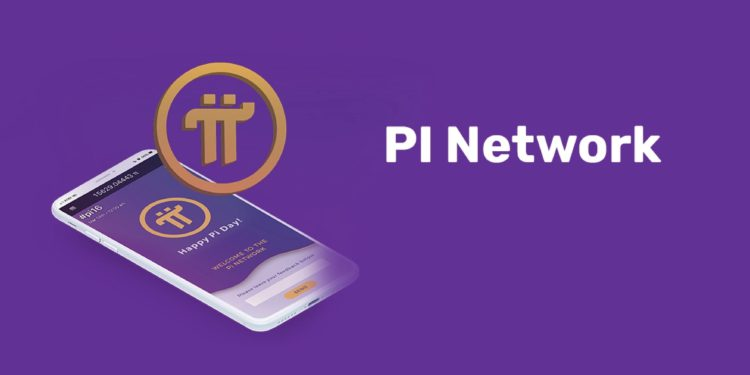Introduction: When "Mobile Mining" Becomes a Reality
"February 20, 2025, at 4:00 PM, this time will be written in the history of cryptocurrency - either the crowning moment of Pi Network as the 'people's Blockchain', or the starting point of the biggest air coin bubble burst in history."

Six years ago, Stanford Ph.D. Nicolas Kokkalis launched a social experiment with a mobile App: users could "mine" by clicking a button once a day, without specialized mining rigs, power consumption, or cost. Now, this experiment is reaching its conclusion - Pi Network has announced that the Open Network will officially launch on February 20, 2025, at 4:00 PM Beijing time, when Pi coins will be interconnected with external systems for the first time.
The data tells a tale of two extremes:
- Passionate supporters: 50 million global users, over 18 million have completed KYC verification, and Taiwanese businesses even use Pi coins to buy bubble tea and pay rent;
- Skeptics: The mainnet has been delayed for 6 years, the tokens are not tradable, and the "IOU futures" listed on exchanges are accused of being hype.
In this controversial vortex, is Pi Network a technological revolution or a carefully designed capital game? This article will analyze its value logic and potential risks based on the latest data and ecosystem progress.
I. Positive Outlook: Three Breakthroughs of the Democratized Blockchain
1. User Base: The "Traffic Nuke" that Crushes Traditional Public Chains
Pi Network has created the largest user network in cryptocurrency history:
- 50 million registered users, far exceeding Ethereum (less than 5 million active users out of 120 million addresses);
- Over 18 million KYC-verified users, with more than 8 million already migrated to the closed Mainnet, expected to exceed 10 million migrations before February 20;
- Asian dominance: 1.34 million users in South Korea, surpassing the local user base of Binance, and Vietnam and the Philippines rank among the top three in community activity globally.
This user scale gives it a natural ecosystem incubation capability - even if only 1% of users participate in development, it can spawn 50,000 DApps (currently only 80 Mainnet applications).
2. Technological Democratization: The Fusion of Mobile Mining and Stellar Consensus
Pi Network aims to lower the blockchain entry barrier with two major innovations:
- Stellar Consensus Protocol (SCP): Abandoning Bitcoin's energy-intensive PoW, it achieves energy-efficient consensus through the Federated Byzantine Agreement (FBA), allowing mobile participation in verification;
- Hierarchical role system: From "Pioneers" (daily sign-in mining) to "Nodes" (running full nodes), users earn tokens based on their contributions, forming a bottom-up governance structure.
This design makes blockchain accessible to non-technical groups - housewives, students, and retirees can all participate, breaking the "geek-exclusive" industry barrier.
3. Real-world Applications: From Taiwanese Bubble Tea Shops to Cross-border Payments
Although the Mainnet is not yet open, Pi Network has already explored unique offline scenarios:
- Taiwan business experiment: Over 200 merchants accept Pi coin payments, from catering to property rentals, 1 Pi ≈ 25-30 New Taiwan Dollars (about $0.8-1);
- Cross-border remittance test: Filipino workers transfer funds to their home country through the Pi wallet, with fees only 1/10 of traditional banks;
- Developer incentives: 80 Mainnet applications cover education, healthcare, logistics, such as "Pi Health" using anonymous medical data to train AI diagnostic models.
If the Open Network operates smoothly, these scenarios may upgrade from peripheral experiments to a global inclusive financial infrastructure.
II. Negative Controversies: Trust Deficit and Valuation Bubble
1. Six-year Delay History: The Crisis of Crying Wolf
Pi Network's Mainnet timeline can be described as a "textbook of procrastination".
Pi Network was launched in 2019, initially supporting cryptocurrency mining via smartphones, and has gone through multiple stages, including Testnet, Node Program, and Closed Mainnet. Currently, the project is in the transition phase towards the Open Network, expected to migrate the Mainnet in early 2025.
- March 14, 2019: Official launch - Pi Network was officially launched on "Pi Day" (March 14), named after the mathematical constant π (3.14). The initial mobile app version allowed users (called "Pioneers") to directly mine Pi cryptocurrency through their smartphones.
- March 14, 2020: Testnet phase started - On the first anniversary of Pi Network, the project entered the Testnet phase, marking an important step towards decentralization. This stage supported the deployment of globally distributed nodes, allowing community developers to use Test-Pi to test the blockchain and create applications.
- Late 2020: Node Program introduced - Pi Network launched the Node Program, allowing users to run network nodes on personal computers. This increased the Pioneers' contributions to network security and transaction verification, driving decentralization.
- December 2021: Closed Mainnet launched - Pi Network entered the Closed Mainnet phase, with the Mainnet officially going live, but still under firewall protection to prevent external connections. During this period, users could complete KYC (identity verification) and migrate their Pi to the live Mainnet, while the community built applications and utility tools within the closed network.
- October 2023: Roadmap published - The Pi core team released a milestone-based roadmap, detailing past achievements, current projects, and future plans. This roadmap increased transparency and outlined the key steps towards the Open Mainnet.
- December 2024: Open Network update - The Pi Network team announced that the originally planned Open Mainnet launch at the end of 2024 would be delayed to the first quarter of 2025. This decision aimed to allow more users to complete KYC and migrate their tokens to the Mainnet, ensuring a more inclusive and secure ecosystem.
- January 2025: Mainnet migration progress - As of January 2025, Pi Network has over 18 million KYC-verified users, with more than 8 million having migrated their tokens to the Mainnet. The team extended the KYC and Mainnet migration grace period to January 31 to further support the transition.
Although the team attributes the delays to KYC verification and ecosystem building, the community questions whether they are deliberately delaying to maintain token scarcity.
2. Trillion-dollar Valuation Doubts: The Fatal Trap of Full Dilution
Calculated at a maximum supply of 100 billion, if Pi coin reaches $1, its fully diluted valuation (FDV) would reach $100 billion - over a third of Ethereum's current market cap ($315 billion). But this faces two paradoxes:
- Liquidity black hole: Currently, only 2 billion Pi have migrated to the Mainnet, with the remaining 98 billion needing to be gradually released through mining. If the team controls the unlocking pace, it may trigger panic sell-offs;
- Lack of application scenarios: The existing 80 DApps are mostly utility-based, lacking value capture scenarios like DeFi and Non-Fungible Tokens (NFTs), casting doubt on the ecosystem's self-sustaining ability.
3. Regulation and Privacy: The Double-edged Sword of Compliance
Pi Network's compliance strategy carries hidden risks:
- Excessive KYC data collection: Users need to submit identity documents, facial recognition, and proof of residence, far exceeding typical project requirements, posing data breach risks;
- Regulatory crackdown risk: If the SEC classifies Pi coins as securities (similar to the XRP lawsuit), the US ecosystem could collapse instantly.
III. Open Network Launch: Four Key Verification Metrics
February 20, 2025, is not only a technical milestone, but also the touchstone of Pi Network's value. The following four indicators will determine its success or failure:
1. Exchange Liquidity Test
- Real trading volume: If major exchanges like HTX and Binance open spot trading for Pi Coin, it needs to be observed whether there is a "listing crash";
- Price anchoring: The current Taiwan P2P price (around $1) and the IOU futures price ($48.3) have a huge difference, and the convergence of the price spread indicates market confidence.
2. Degree of node decentralization
- Distribution of validator nodes: If the top 10 nodes control more than 50% of the computing power, it will violate the original intention of the "people's blockchain";
- Anti-censorship capability: Whether the open network can withstand government-level firewall blockades, especially in sensitive regions like Southeast Asia.
3. Developer migration tide
- DApp explosion speed: Whether the mainnet applications can break through 500 in the next 3 months, and at least one phenomenon-level application appears;
- Cross-chain interoperability: The progress of asset bridges with Ethereum and Solana will determine whether it can integrate into the mainstream ecosystem.
4. Token economic model
- Inflation control: Whether the mining release speed will lead to hyperinflation, referring to the market capitalization collapse of Helium due to token oversupply;
- Burning mechanism: The proportion of in-app fee burning will determine whether Pi Coin can enter a deflationary cycle.
IV. Future Projection: Three Possible Scenarios
Scenario 1: Utopia Realized (Probability 30%)
- Key assumption: Mainnet zero failure, daily trading volume on exchanges exceeds $1 billion, and there are DApps with millions of users;
- Price forecast: Pi Coin stabilizes at $5, FDV reaches $500 billion, and ranks among the top five in crypto market capitalization;
- Social impact: Becoming the inclusive financial infrastructure for developing countries, shaking the SWIFT hegemony.
Scenario 2: Moderate Growth (Probability 50%)
- Key assumption: Stable technology but mediocre applications, with an annual inflation rate controlled within 15%;
- Price forecast: Pi Coin fluctuates between $0.5-$2, with a market capitalization comparable to Dogecoin (around $30 billion);
- Social impact: Maintaining a regional payment tool position, similar to Vietnam's MoMo e-wallet.
Scenario 3: Bubble Burst (Probability 20%)
- Key assumption: Mainnet downtime, regulatory crackdown, and team dumping of tokens;
- Price forecast: Pi Coin plummets to below $0.1, with a large-scale rights protection movement by the community;
- Social impact: Triggering a global trust crisis in the "zero-cost mining" model.
V. Conclusion: A Social Experiment on Blockchain Beliefs
The essence of Pi Network is a social collaboration experiment - it attracts a massive user base with simple interactions, builds community consensus through delayed gratification, and challenges elitism with a populist narrative. Its success or failure not only concerns token prices, but will also validate two ultimate propositions:
1. Does blockchain require a technical threshold? If 50 million ordinary users can create a thriving ecosystem, the large-scale adoption of Web3 will no longer be distant;
2. Does value have to come from scarcity? If the zero-cost mined Pi Coin gains market recognition, the "digital gold" narrative of Bitcoin may face challenges.
Personal Perspective:
The launch of the Pi Network mainnet is the most suspenseful crypto event in 2025. Its massive user base and real-world application scenarios have disruptive potential, but its six-year delay history and valuation bubble are also like the Sword of Damocles. In the short term, there may be price fluctuations due to the release of liquidity after the mainnet launch; in the long run, its fate depends on whether it can evolve from a "social viral tool" to a "value creation engine". If the team can restrain greed and focus on the ecosystem, Pi Coin may indeed become the "people's currency" in the crypto world; if it repeats the fate of a Ponzi scheme, this experiment will become the most expensive lesson in blockchain history.








